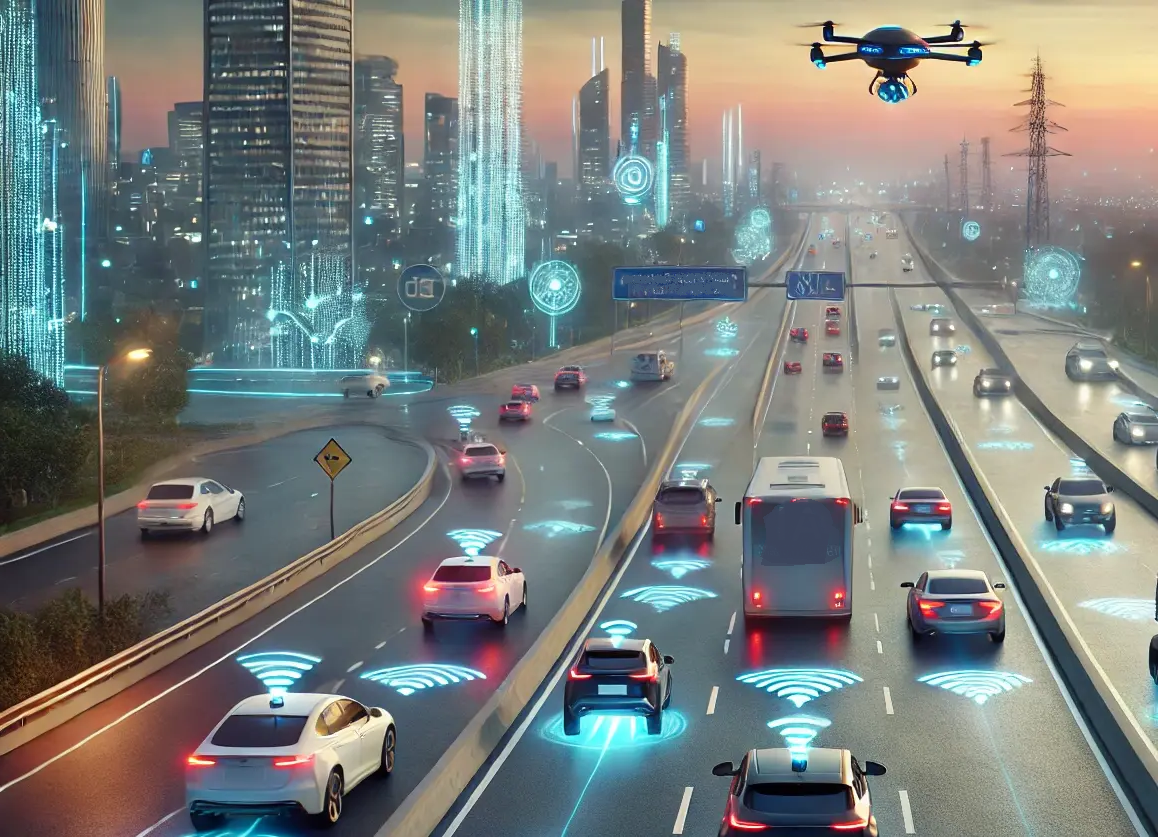Car accidents have long been a major safety concern, but artificial intelligence (AI) is transforming how we prevent them. AI-powered driver assistance systems (ADAS) use machine learning, sensors, and real-time data to monitor road conditions, detect potential hazards, and alert drivers before a crash occurs. Features like automatic emergency braking, lane departure warnings, and adaptive cruise control have already proven to significantly reduce accident rates. As these technologies continue to advance, vehicles are becoming more capable of making split-second decisions that can save lives.
Beyond individual vehicles, AI-driven predictive analytics help identify accident-prone areas and prevent collisions before they happen. By analyzing historical crash data, traffic patterns, and environmental conditions, AI can provide insights for city planners and transportation departments to design safer roads. These innovations make driving not only more convenient but also significantly safer for everyone on the road.
Smart Traffic Systems
According to a leading law firm, AI is also revolutionizing traffic management, reducing congestion and accident risks through real-time monitoring and adaptive traffic control. Traditional traffic lights operate on fixed timers, often leading to unnecessary delays and gridlocks. In contrast, AI-powered systems adjust signals based on real-time traffic flow, ensuring smoother transitions and minimizing abrupt stops that often lead to rear-end collisions. Cities like Los Angeles and Singapore have already implemented AI-driven traffic management systems with promising results.
Additionally, AI-enhanced road monitoring can detect hazardous conditions such as icy roads, heavy fog, or sudden obstacles. Smart cameras and sensors placed at intersections and highways provide real-time feedback, allowing traffic control centers to issue warnings to drivers instantly. By integrating these systems with navigation apps, drivers receive proactive alerts, reducing their likelihood of getting into accidents caused by poor visibility or sudden road hazards.
Another crucial benefit of AI-powered traffic systems is their ability to optimize emergency response times. When accidents occur, smart traffic control can automatically adjust signal patterns to clear the way for ambulances, fire trucks, and law enforcement. This reduces delays and ensures that first responders can reach accident scenes as quickly as possible. By integrating AI with emergency response infrastructure, cities can significantly improve the efficiency and effectiveness of life-saving interventions.
Post-Accident AI Response
When accidents do occur, AI significantly improves emergency response times and post-accident handling. Smart vehicles equipped with crash detection systems can automatically notify emergency services, providing precise location data and assessing the severity of the crash. This quick response can make a crucial difference in survival rates, especially in severe accidents where every second counts.
Beyond emergency response, AI-driven tools streamline post-accident assessments and insurance claims. Traditionally, evaluating damage and processing claims is a lengthy and complex process. AI-powered claim assessment systems analyze photos and videos of accident damage, instantly estimating repair costs and expediting the settlement process. Insurance companies adopting AI solutions are not only improving efficiency but also reducing fraud by detecting inconsistencies in accident reports and repair estimates.
Moreover, AI-based chatbots and virtual assistants are now assisting drivers throughout the post-accident process. These systems provide instant guidance on what steps to take after a crash, from collecting evidence to contacting insurance providers. By automating these interactions, AI helps drivers navigate the often overwhelming post-accident procedures, reducing stress and ensuring that necessary actions are taken promptly.
Blockchain & Accident Records
Blockchain technology is playing an increasingly important role in accident management by providing a transparent and tamper-proof way to store accident records. Traditional accident reporting systems can be prone to errors, misrepresentation, or fraud, especially when disputes arise regarding fault. With blockchain, accident data, including timestamps, vehicle diagnostics, and witness statements, are securely recorded, preventing any unauthorized alterations.
For insurance companies and legal professionals, blockchain ensures that accident claims are processed fairly. By integrating AI-driven analytics with blockchain-stored data, insurers can make objective assessments, reducing the risk of fraudulent claims. As more governments and corporations explore blockchain applications in transportation, we are moving towards a future where accident records are both secure and indisputable.
Autonomous Vehicles & Safety
Self-driving cars are among the most anticipated AI-driven innovations, with the potential to drastically reduce accidents caused by human error. Over 90% of accidents result from human mistakes, including distracted driving, speeding, and impaired judgment. Autonomous vehicles eliminate these risks by relying on AI-powered decision-making, real-time environmental scanning, and ultra-fast response times.
While autonomous driving technology is still evolving, companies like Tesla, Waymo, and GM Cruise are testing advanced self-driving systems with impressive safety records. However, challenges remain, including regulatory concerns, ethical decision-making algorithms, and ensuring AI can handle unpredictable scenarios like pedestrian crossings or sudden lane changes. As these hurdles are addressed, fully autonomous vehicles will likely become a mainstream solution for safer transportation.
Conclusion: The Future of AI in Road Safety
AI and smart technology are fundamentally reshaping how we prevent and manage car accidents. From advanced driver assistance systems and smart traffic management to AI-powered post-accident response and blockchain-secured accident records, technology is making roads safer and improving efficiency across the transportation sector. While challenges remain, the rapid advancement of AI-driven innovations suggests that the future of road safety is brighter than ever.
As we move towards a more connected and automated driving experience, embracing these innovations will be key to reducing accidents and saving lives. Governments, businesses, and individuals must continue to support and invest in AI-powered solutions to ensure that technology-driven safety becomes a standard rather than an exception. In the coming years, AI will not only enhance how we drive but also redefine what it means to travel safely.
